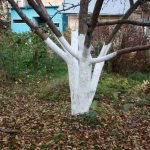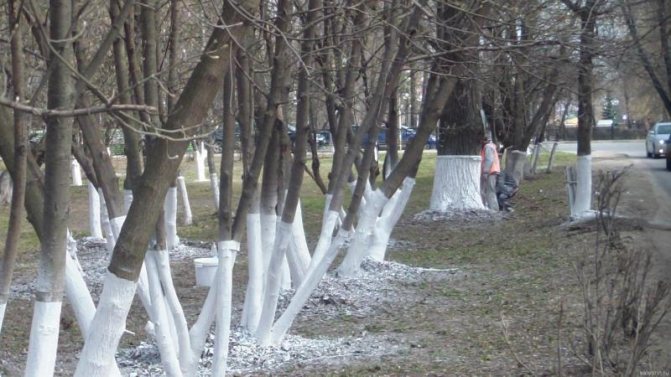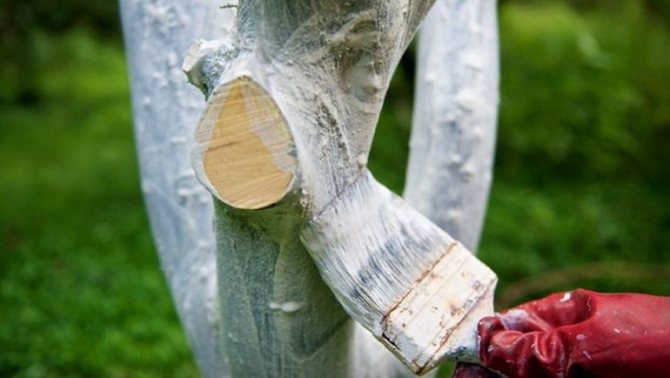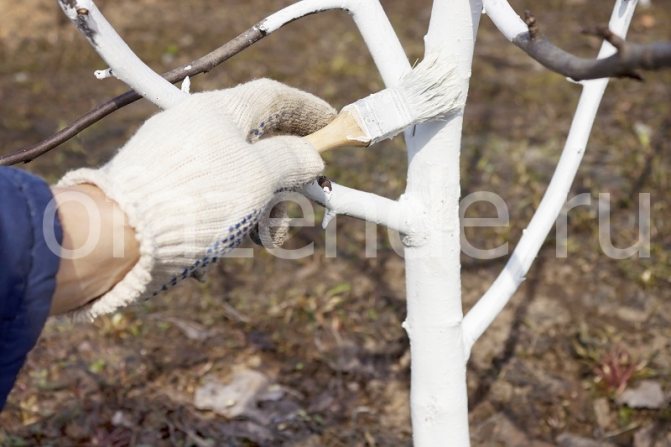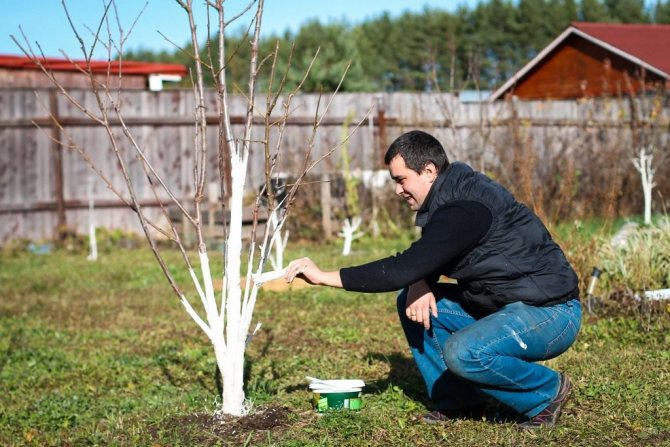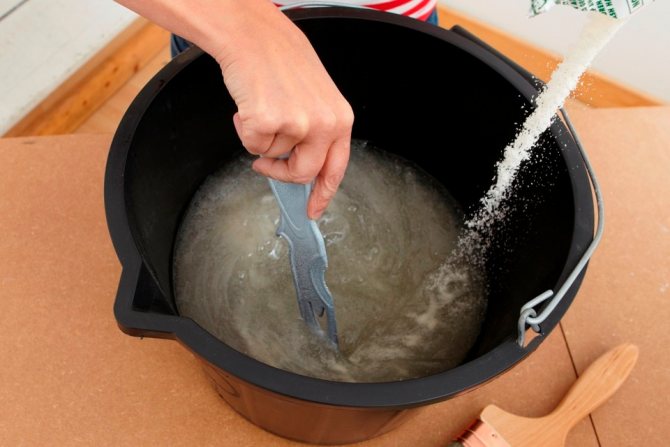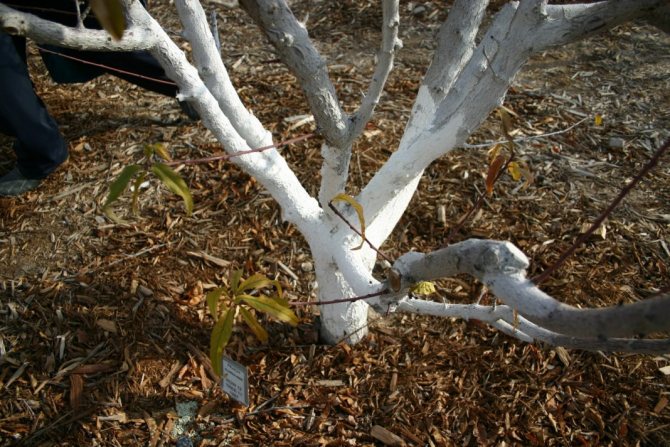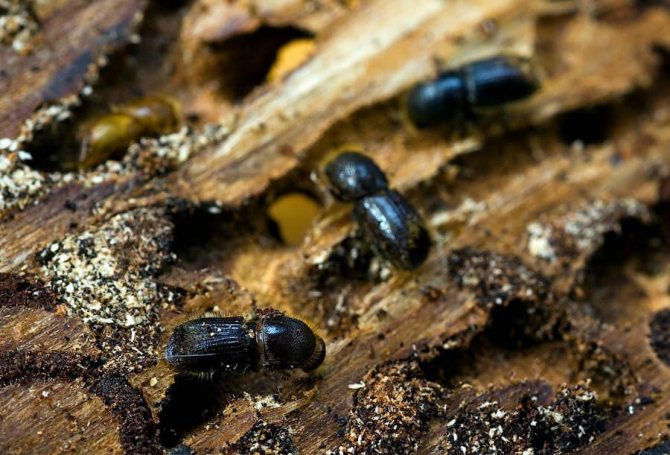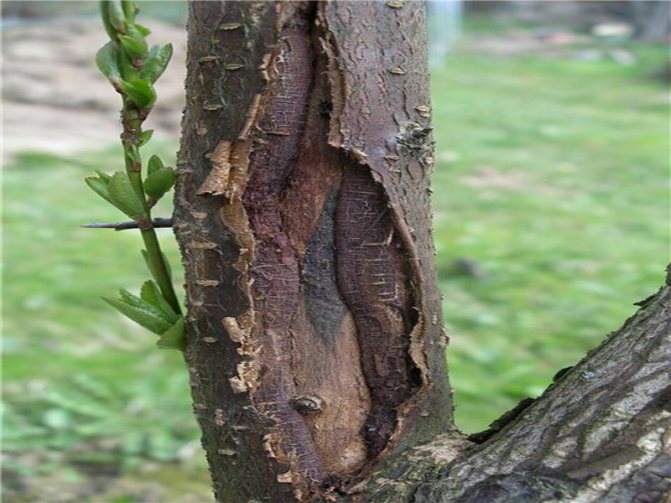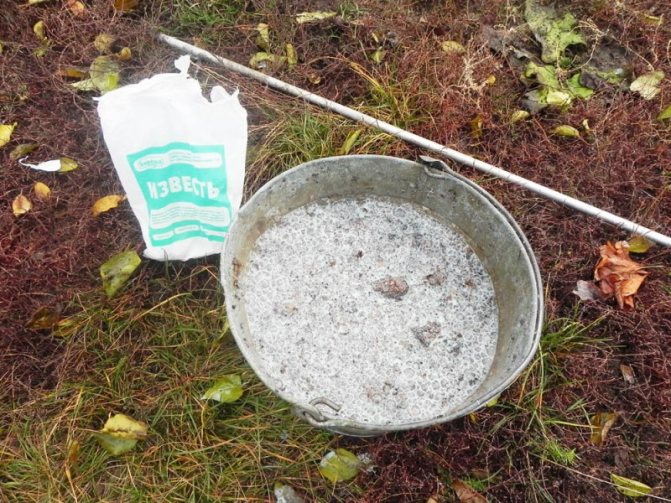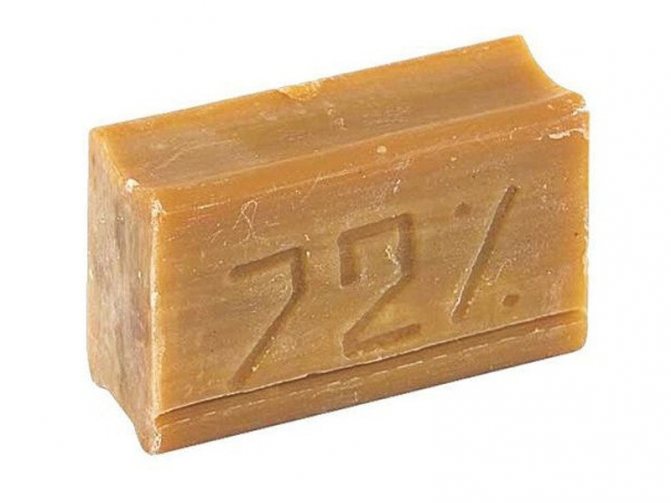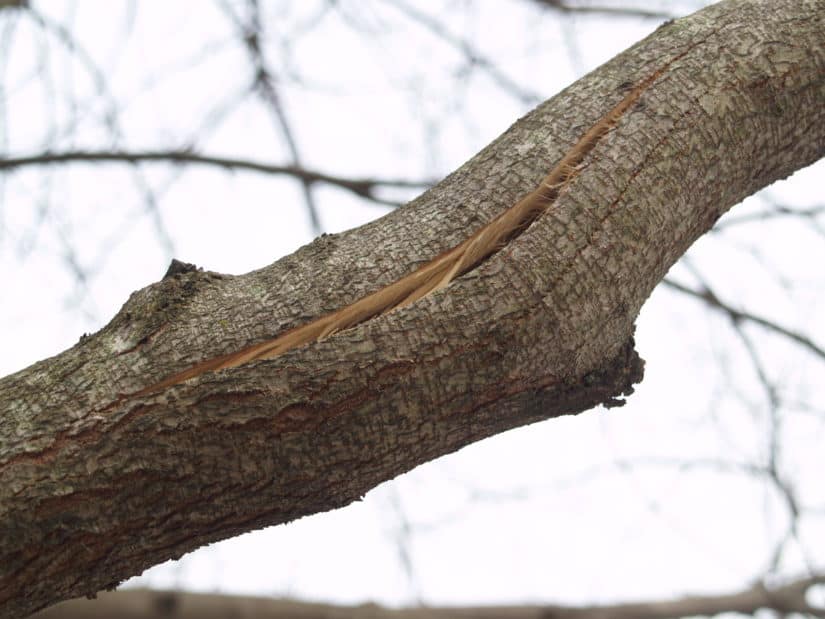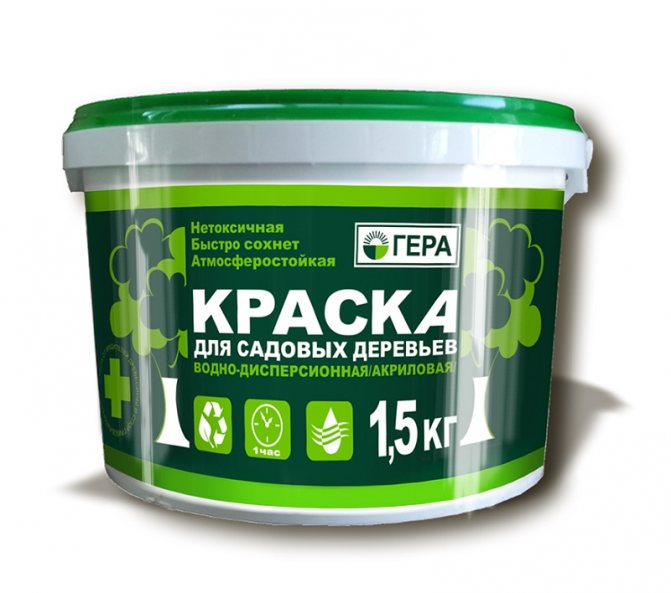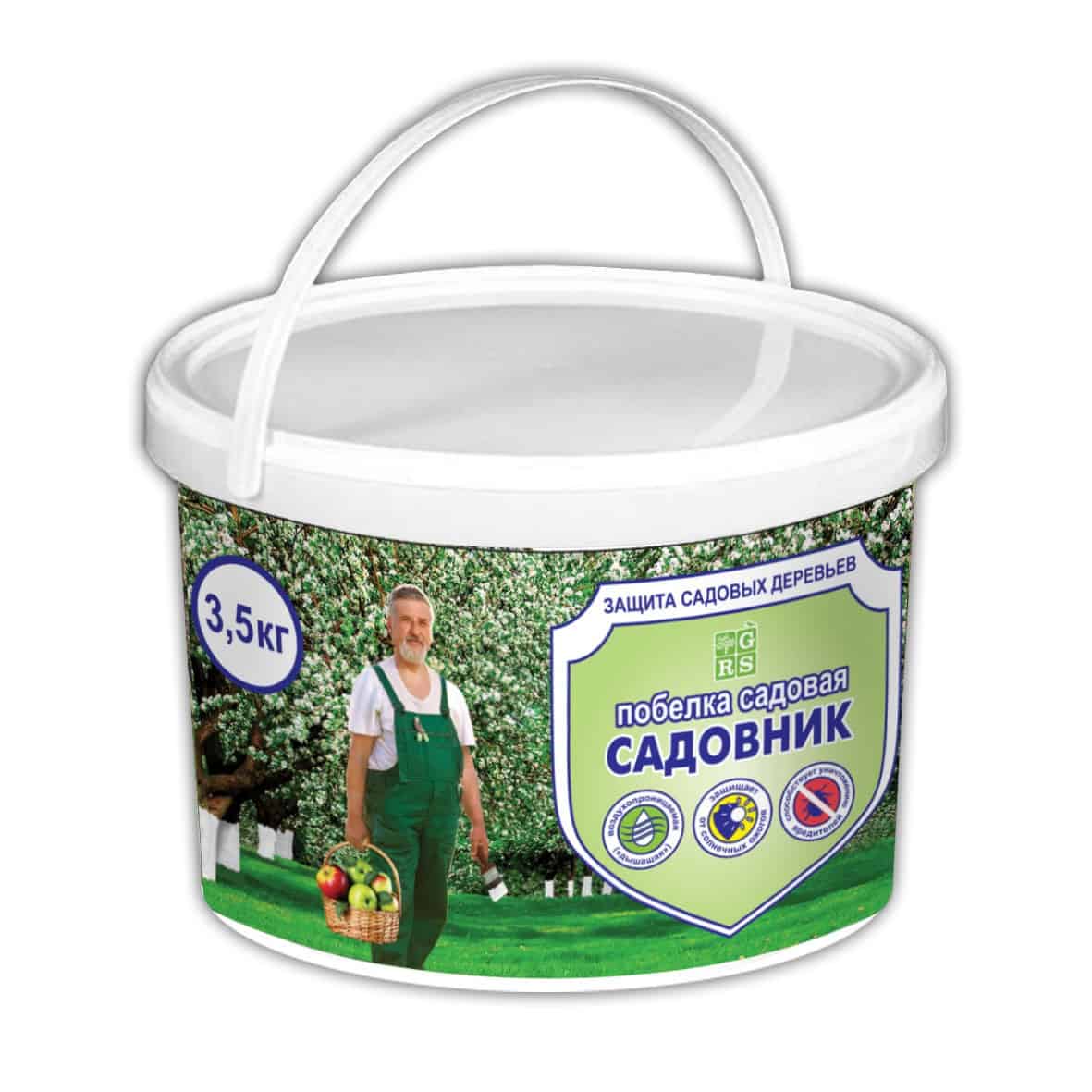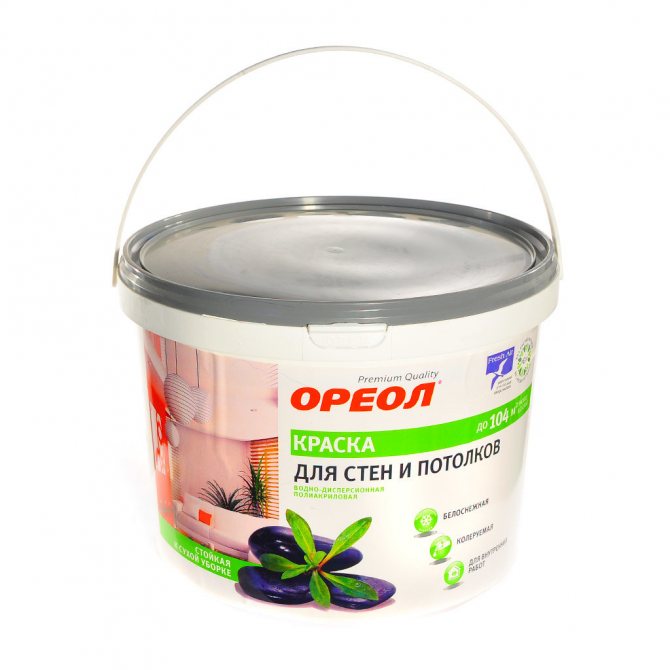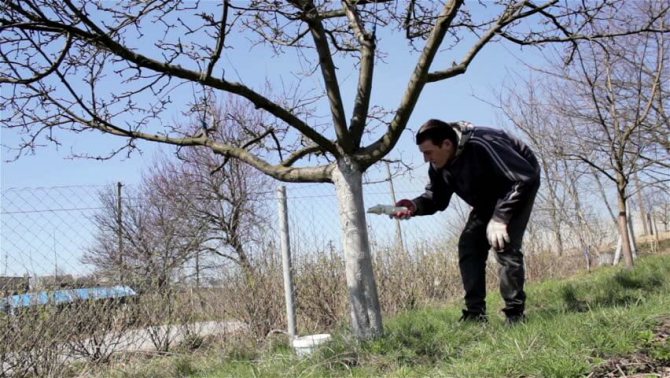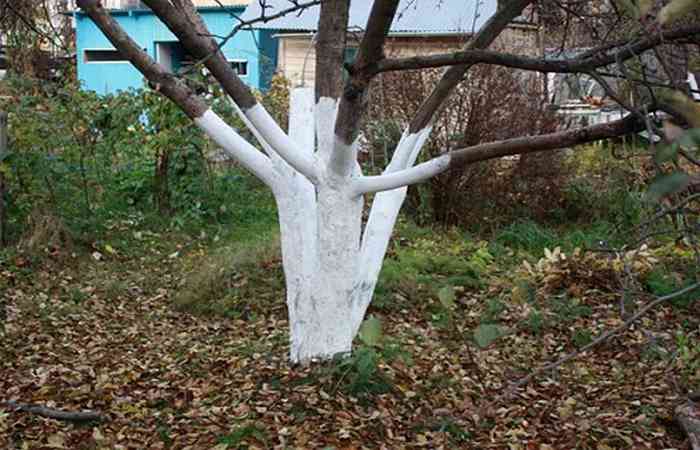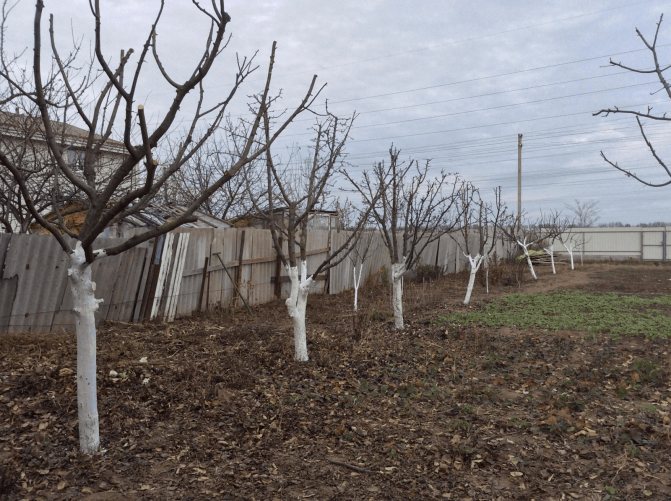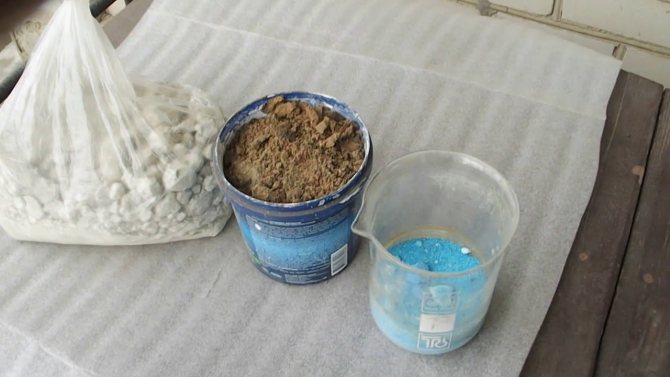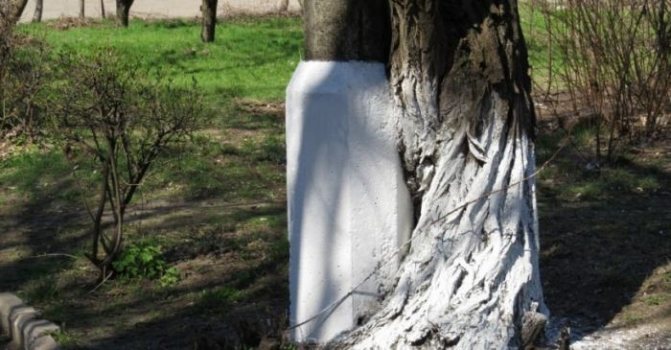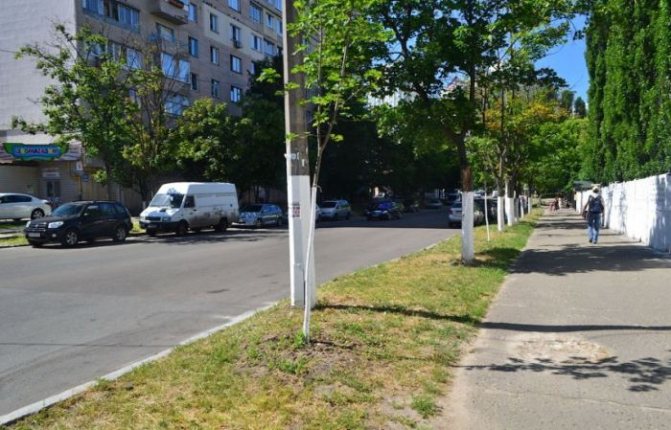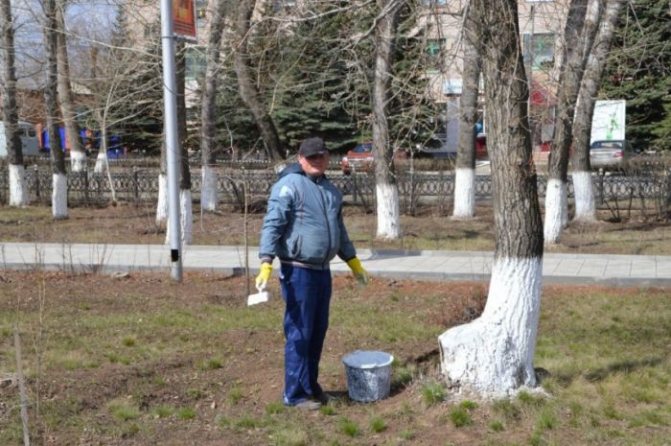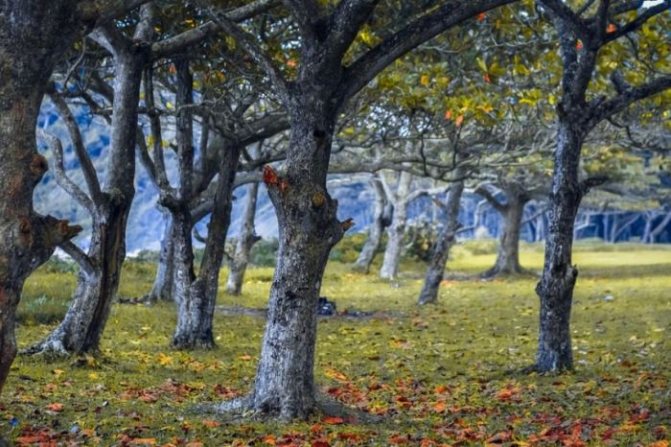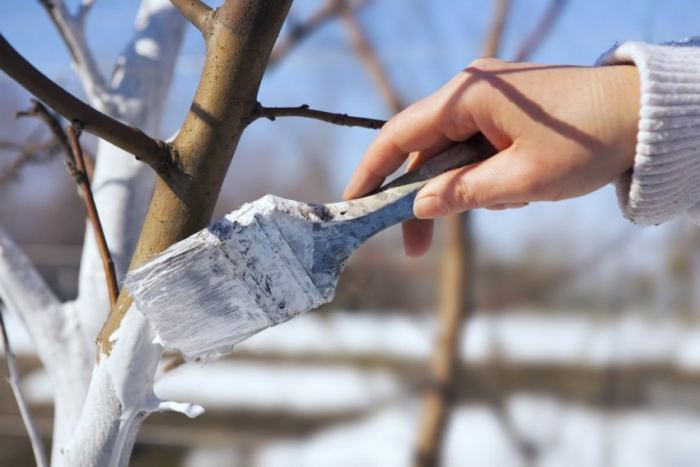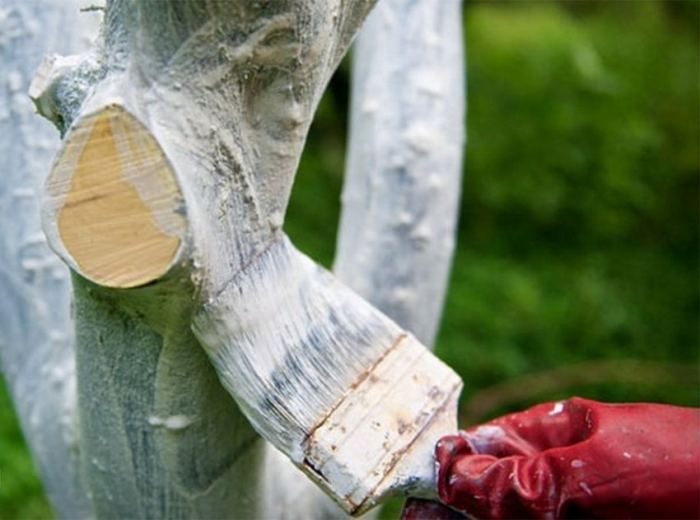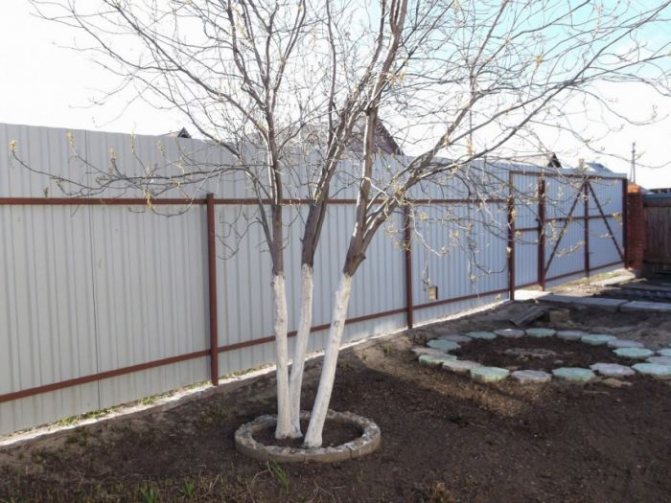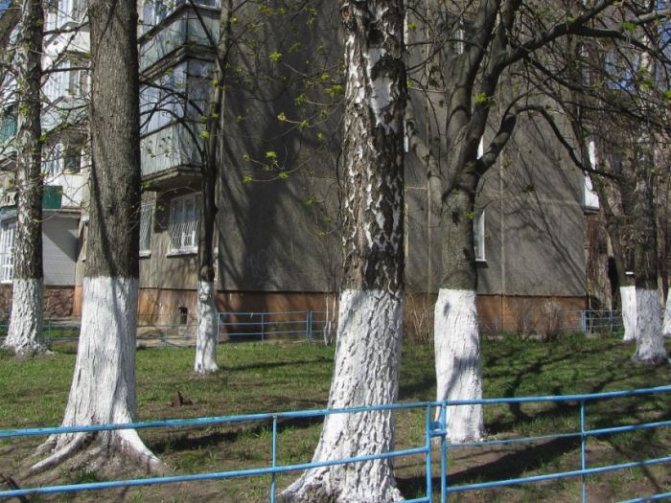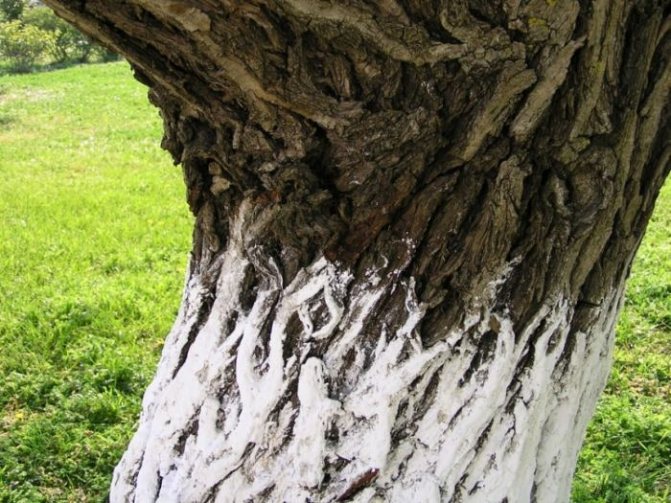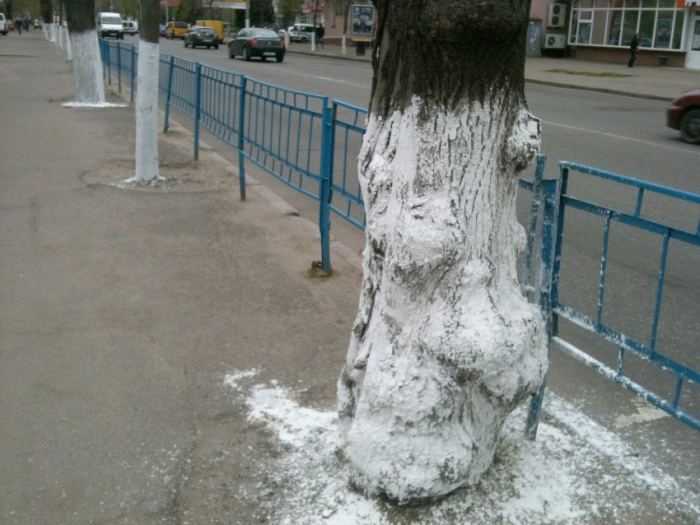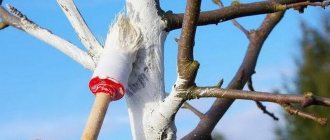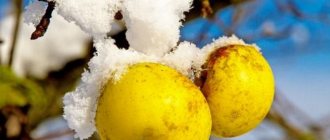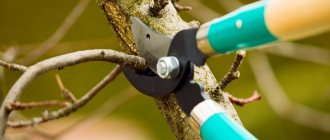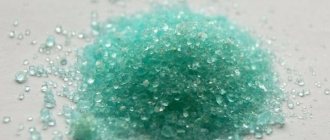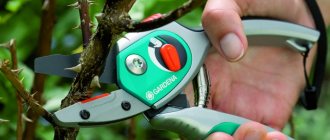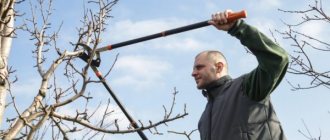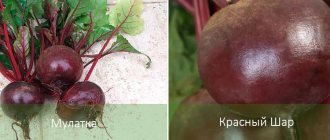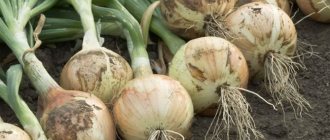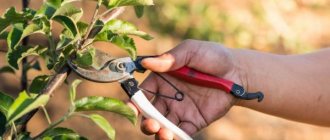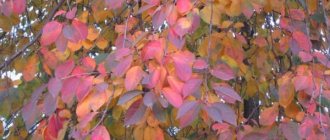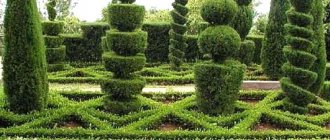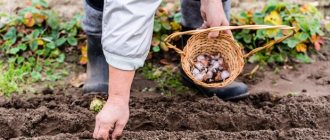A well-groomed garden with slender rows of trees, dressed in white skirts after whitewashing, is pleasantly pleasing to the eye in the spring. However, over the summer, rains often wash it away, so it is important to renew the protective layer before the onset of frost. Knowing when to whitewash fruit trees in autumn, you can not only give the garden an aesthetic look, but also help in wintering and protect from diseases and pests.
Why do you need to whitewash trees
The answer to the question "Should trees be whitewashed?"In the Central zone (Moscow region), in the Urals and in Siberia, it is unambiguous - "Yes need". But with a little southern exception... If you live in a very warm region, where there are no subzero temperatures and sudden changes in weather (minus-plus), then based on the main purpose of whitewashing, you practically do not need such a procedure.
By the way! All garden trees need to be whitewashed, not just fruit trees.
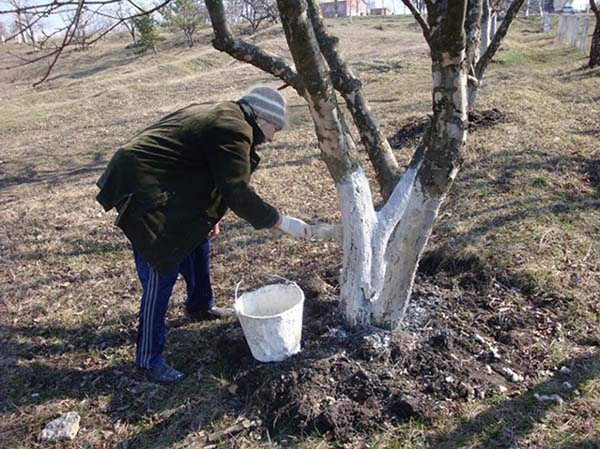
Why are trees whitewashed, what goals are pursued in this case:
- prevent frost cracks (sunburn) - cracks in the bark, which are formed due to temperature changes (plus or minus) in the transitional winter-spring period.
- to destroy all kinds of insect pests and other parasites, as well as their eggs that are going to winter in the bark (ticks, gold-tails, leafworms, moths, etc.);
- (based on the previous one) protect the bark from pests, pathogenic microorganisms and bacteria;
- simultaneously carry out a kind of treatment and disinfection of wounds;
- and last but not least to make the garden more colorful and attractive (aesthetics).
Video: why and how to whiten trees
Is it possible to whitewash young trees
Some novice gardeners believe that whitewashing can, on the contrary, only harm young trees. However, this is not at all the case, if, of course, certain rules are followed.
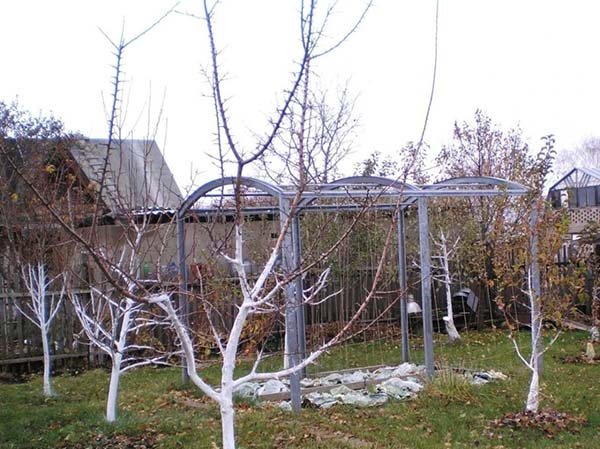

Trees are whitewashed both old and young. But on young seedlings, weaker solutions should be used (if you use lime, then its concentration should be reduced by 2 times) so as not to burn the young bark. Or you can use special paints for whitewashing garden trees, for example, the same water-based or water-dispersible, or acrylic. But it is imperative to whitewash, since young seedlings have a very thin bark, which can easily be damaged in late winter or early spring from sunburn (burst due to temperature differences).
By the way! There is a not unfounded opinion that it is better not to whiten very young seedlings with a smooth bark, but to wrap the trunk with white covering material (spunbond ribbons). This will not only prevent sunburn, but also protect the seedling from rodents.
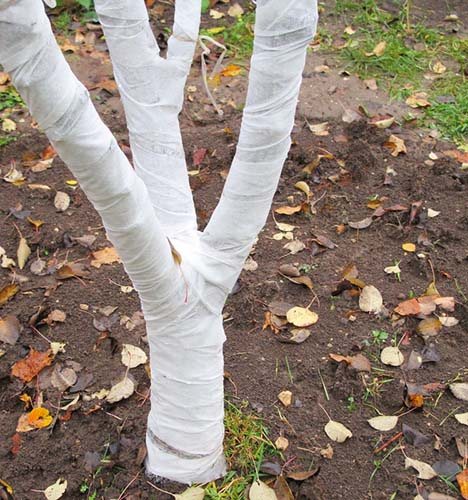

Video: protecting young fruit trees from sunburn with whitewash
Advantages and disadvantages of water-based paint for wood
An environmentally friendly water-based composition often makes the use of this variety the only possible one. The water emulsion is recommended for repairs in the children's room, the personal space of allergy sufferers and asthmatics.
Water-dispersed solutions have unlimited possibilities for obtaining the required color. You can add color (special water-soluble pigment) of the desired shade to them.
Pros of an aqueous emulsion for woodworking
Water-based coatings are distinguished by a number of excellent characteristics, due to which they are included in the segment of the most demanded paints and varnishes. Advantages:
- absence of toxic components in the composition;
- the surface "breathes" (air penetrates, moisture is absorbed and evaporates);
- the film on the surface looks unstable, but it lasts for many years;
- if necessary, to obtain a more liquid consistency, it is diluted with ordinary water;
- due to the added pigments of various concentrations;
- suspension available for domestic use, applied with a spray gun, brush or roller;
- does not require ventilation, good ventilation is sufficient;
- when working indoors with water-based paint for wooden surfaces, you can work in any season;
- the painted surface can be cleaned, washed and repainted;
- in contact with open skin does not cause irritation, it is enough to wash with soap;
- a long-term period of flawless operation is guaranteed, even when processing the outer surface;
- when applied correctly, the coating is free from defects;
- environmental friendliness of components;
- affordable cost.
Cons of using water-based emulsions
We cannot but mention the weaknesses of water-based dye mixtures:
- too liquid composition can lead to slight deformation due to swelling of overdried wood;
- the coating has some vulnerability to moisture, so it is better not to use it in rooms with excess steam and moisture;
- has poor adhesion to smooth surfaces, requires preliminary sanding and priming.
The consumption of paint diluted with water is more difficult to calculate than in the case of the finished composition (the parameters are indicated on the package). When pigment (color) is added, it is important to keep the overall proportion. Even when the base at the bottom of the can is thicker, you cannot simply add water for ease of application. After thinning, the color will be paler. Before starting work, it is important to prepare the required amount of pigmented paint.
When to whitewash trees
In the opinion of most gardeners, whitewashing of garden trees should be carried out 2 times a year - in spring and autumn. But it just so happened that most often inexperienced summer residents whitewash in the spring (perhaps because of the Soviet experience of spring subbotniks), although the main and most important is considered exactly autumn whitewash.
But there is also additional summer whitewash, which is resorted to only if you either whitewashed the trunk poorly, or used non-waterproof compounds that washed off the rains.
Bark stripping
As the tree grows, many cracks and depressions appear on its bark, which are good conditions for the reproduction of pests. The trunk is inhabited by mosses and lichens. Therefore, it is necessary to carefully remove all damaged bark and clean it of unnecessary growths.
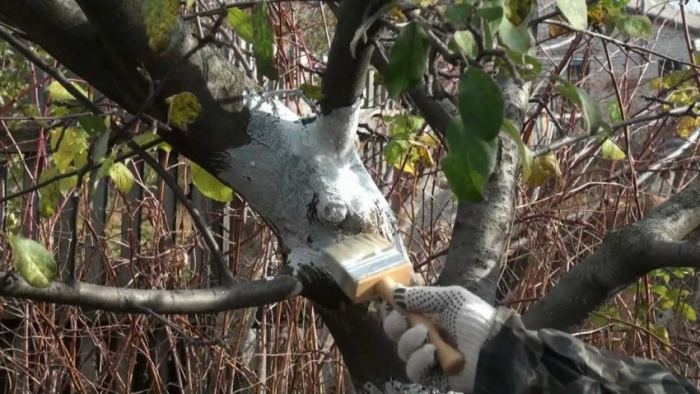

It is better to use fabric mittens for these purposes and not to use metal or plastic knives. If you do decide to use something metallic, you must do it very carefully so as not to injure the wood.
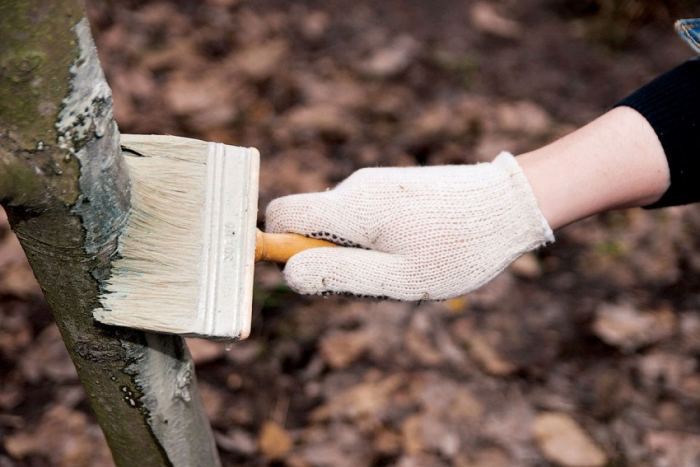

You can use a sharpened stick to clean hard-to-reach areas.
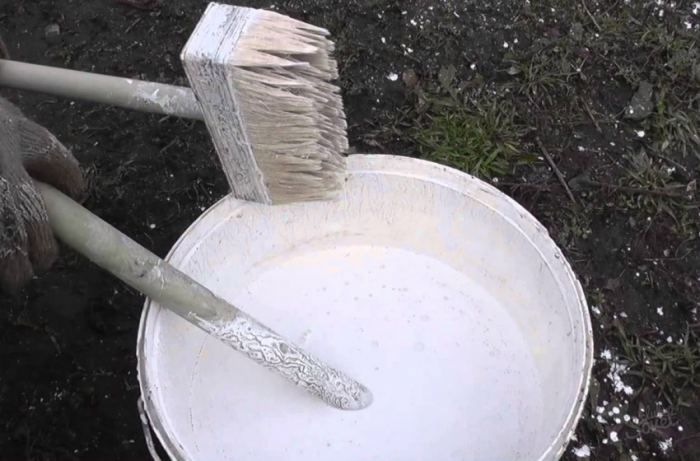

Whitewashing trees in autumn: terms, goals, features
As for certain dates, experienced gardeners recommend whitewashing trees in the fall, when the air temperature drops to + 3-5 degrees (but not less than 0, that is, the procedure must be performed at positive temperatures), prolonged autumn rains will end, and all the leaves will fall , that is, approximately in the month of October - November.
By the way! Under certain circumstances (if you use exclusively high-quality and waterproof composition), you can only do with autumn whitewashing, because it is considered the most effective.
It should be understood that it does not matter whether it is a young tree or an old one. If it was not whitewashed in the fall, then at the end of winter - early spring (as a rule, this is February-March), it can get a sunburn (frost holes form on the trunk).
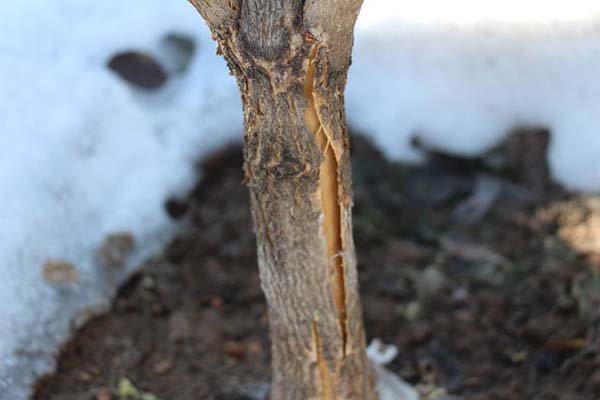

Interesting! What is a sunburn of a tree (frostbite) and how does it happen?
When in February-March the daytime temperature rises to + 8-10 degrees, and at night drops below 0 degrees, then during the day the tree perceives such a high temperature as a signal to start sap flow. With the onset of night and subzero temperatures, all the juice that ended up in the bark crystallizes (freezes), and the bark simply cracks from such a temperature drop (tissue rupture occurs = frost cracks). Although, according to other sources, cracking occurs due to thermal expansion and contraction of the wood itself.
To prevent this from happening, the trunk is whitewashed, because the white color perfectly repels the sun's rays.
Video: how to whitewash trees in autumn: whitewashing secrets
Types of water-based paints applicable to wood
Water-based paint, from the point of view of chemistry and physics, is an ordinary solution filled with binders and pigments. From the information in the previous section, it became clear that it is possible to paint a tree with a water emulsion.
When buying on packaging, it is important to carefully study all the information. A large segment of the paint and varnish market is:
- water-dispersed (acrylic, latex, etc.) compounds;
- water emulsions.
The difference in the structure and physical and chemical processes of dye mixtures:
- A water-dispersed solution contains a suspension of insoluble solid particles in a liquid. Water evaporates during surface treatment, the pigmented particles form a stable structure. They adhere well to vertical and overhead surfaces. An example is whitewashing trees with lime mortar.
- Emulsion is a dense suspension of a multi-molecular pigment and thickener in a ready-to-use form. Water does not react with insoluble oily base. After application, when the H2O molecules evaporate, a film resistant to mechanical damage is formed.
A well-chosen composition is designed to ensure high-quality adhesion to the treated surface.
What is the peculiarity of facade water-based dyes
Classification of water-based coloring compositions offered in building supermarkets and catalogs:
- water-based paint for wood for interior work;
- facade dyes (coatings for external processing of vertical surfaces).
Compositions for outdoor use are the most resistant to temperature extremes, moisture, ultraviolet light, and natural pollution. It assumes additional inclusions:
- anti-freeze antifreeze;
- fungicides that prevent the formation of fungi and mold on the surface of the wood;
- thickeners (to provide a thick consistency and dense coating);
- fire-fighting components so that the paint does not support the combustion process.
Important! When buying, it is necessary to clarify which variety the preferred coloring composition belongs to. This will ensure the flawless operation of the treated wood surface.
Varieties of water-based compositions
Experts can name up to a dozen varieties of dyes that contain water. Main classification:
- Acrylic paint is widely used in interiors to cover various surfaces, including wood lamellas. Strong, elastic, one of the components is a resinous substance, it is an emulsion.
- The silicone composition includes high molecular weight elastic compounds in an H2O solution.
- Mineral emulsion based on light cement and slaked lime, suitable for gardening and painting construction sites.It is rarely used, because in many respects it is inferior to most modern formulations with modified additives and stabilizers.
- Silicate paint, simple in composition and method of hardening, is a solution of liquid glass with a pigment. Application - for outdoor work, physical and chemical properties provide resistance to adverse weather factors.
Note! The tree can be painted with water-based paint - emulsions give a loose structure with sufficient water and air permeability.
Dispersible formulations including acrylates are a good choice for protecting and enhancing the aesthetics of wood products. They are characterized by a suitable consistency and high adhesion to the surface.
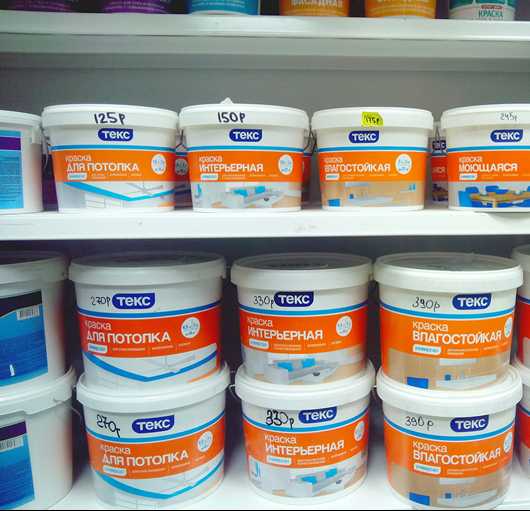

Whitewashing trees in spring: terms, goals, features
Spring whitewashing (better even say early spring), as a rule, is carried out if, for some reason, the autumn was not carried out. Or if it has washed off or has peeled off strongly, therefore it is also called repeated or, in a way, renewing.
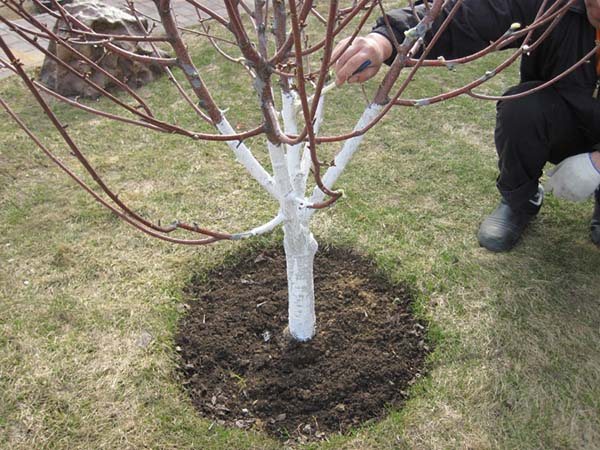

The whitewashing of trees in spring begins when the thermometer reaches positive values, that is, at a temperature above 0. At the same time, it is important to be in time before the buds bloom and the foliage appears (if there is still snow, then it is possible at this time), in other words, the approximate period of spring whitewashing - this is the end of February-March month.
Thus, the main goals (advantages) of the spring whitewashing of trees are:
- updating the autumn whitewash to improve protection;
- retention of bud opening (to postpone flowering and protect against recurrent spring frosts);
- prevention against pests and diseases (fungicides must be included in the composition, such as copper or ferrous sulfate)
- beauty, as whitewashed trees will look much more decorative.
Video: whitewashing trees in spring - a recipe for life-giving bark balm
But! Many professional agronomists believe that spring whitewashing is a meaningless activity that performs only a decorative function, but not the main one - a protective one.
Sealing cracks
To speed up the healing process, you need to patch up all the irregularities and cracks in the trunk. To do this, you can use a ready-made composition purchased in a store or prepare it yourself from clay, manure and straw.
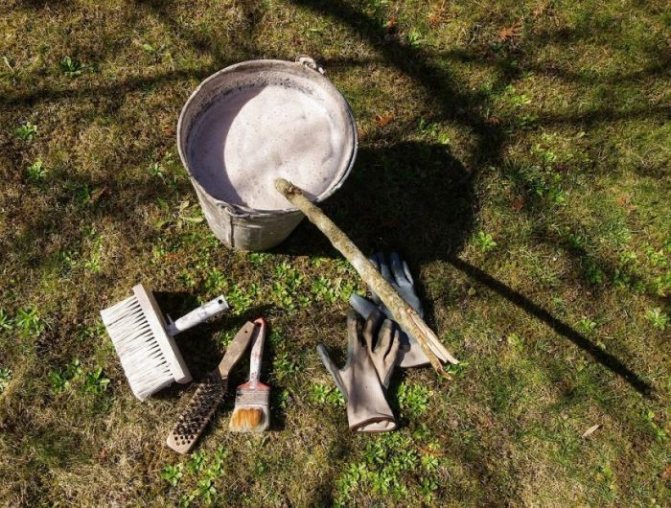

You can take infused ash in water. Add laundry soap shavings for better adhesion. Any mixture prepared should have the consistency of a thick dough.
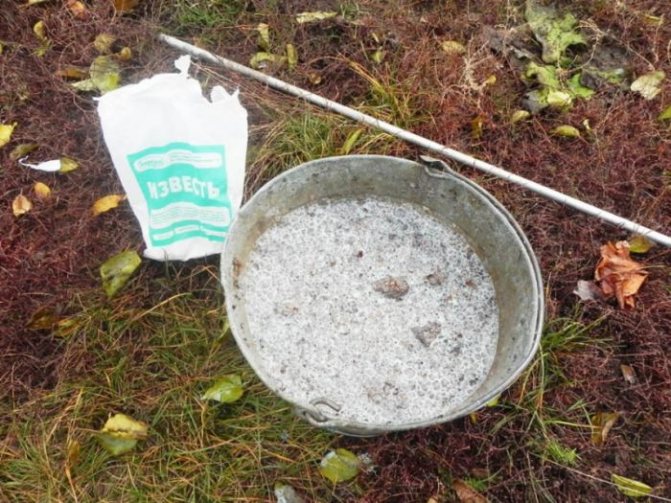

How to whitewash trees: preparatory work and whitewashing technique
That the procedure was as effective as possible, before performing the whitewashing of the trunk itself, the tree must first be prepared:
- Carefully clean the stem (trunk) from old dead bark, as well as get rid of various mosses and lichens. It is convenient to do this with gloves using a stiff brush, a small scraper or a wooden knife. At the end of the work, all the garbage must be collected and must be removed from the site, or it is better to just burn it.
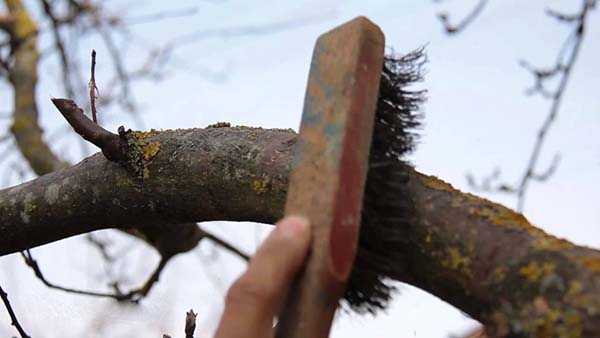

- Disinfect the trunk, all wounds and cracks by treating copper or iron vitriol (3-5% solution), or by preparing an ash-and-soap solution (200-300 kg of ash, 40 grams of grated laundry soap, or liquid soap per 10 liters of warm water).
- Then fill up all deep wounds, hollows, cracks and crevices with clay, cement or even polyurethane foam. For shallow ones, you can use a garden pitch (but according to many gardeners, its use during this period is undesirable).
Video: which is better - garden var or clay
Only after completing these procedures, you can proceed directly to whitewashing.
Video: preparing a tree for whitewashing
Important! As mentioned earlier, it is necessary to whitewash at positive temperatures. Moreover, it is advisable to choose a dry and clear day so that the whitewash dries quickly and is well fixed.
What is better to whiten? To whitewash a tree trunk, it is convenient to use:
- flat flute brush;
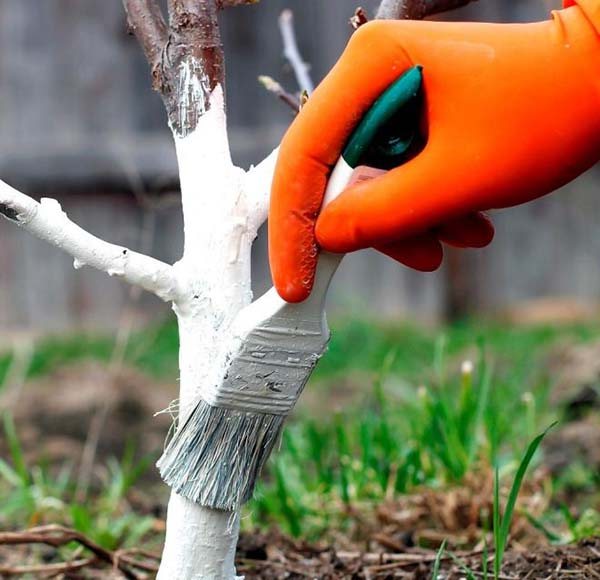

- a special brush from a washcloth (paint brush or maklovitsa);
- paint roller;
- spray gun (if you need to whitewash a lot).
To what height should the trees be whitewashed? Some gardeners believe that the higher the better, but still, as a rule, trees are whitened from the ground and down to the base of the skeletal branches, that is, the entire stem (from the root collar to the first skeletal branch of the lower tier), although it is highly recommended grab 1/3 of the lower skeletal branches.
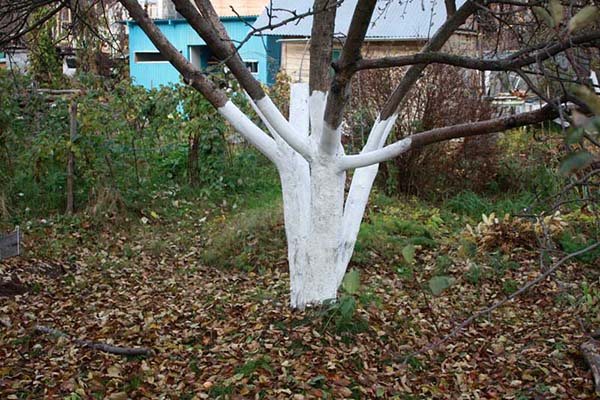

Video: how to prepare and whitewash trees in autumn
Lime painting
There is now a lot of slaked lime available already. Fluffy - this is the second name of this product. How should it be used to keep garden trees safe from insect pests?
First of all, you should think about safety: before starting to dilute the dry mixture, you should wear gloves and goggles.
The cooking process is troublesome and quite laborious. It is necessary to carry out the following steps in stages:
- Dilute the fluff at the rate of two kilograms of the purchased mixture for ten liters of water.
- Add two hundred and fifty grams of copper sulfate.
- Pour in one kilogram of oily clay.
- Add half a kilo of cow dung if desired.
The resulting mixture should be liquid, similar in consistency to low-fat sour cream. Finished whitewash should not run down the tree trunk. If this happens, you need to add a small amount of clay again.
This method of painting trees, in addition to the laboriousness in preparation, is also not very effective. Lime whitewash is washed off very quickly, therefore it does not provide one hundred percent protection for tree trunks.
What to do? How to paint a tree trunk so that the effect is long lasting and does not require a lot of time and effort?
Disinfection
After cleaning, the surface must be disinfected. This is done with the aim of destroying various pathogens and pests. In addition, in this way, the cracks that we caused during the cleaning process are disinfected.
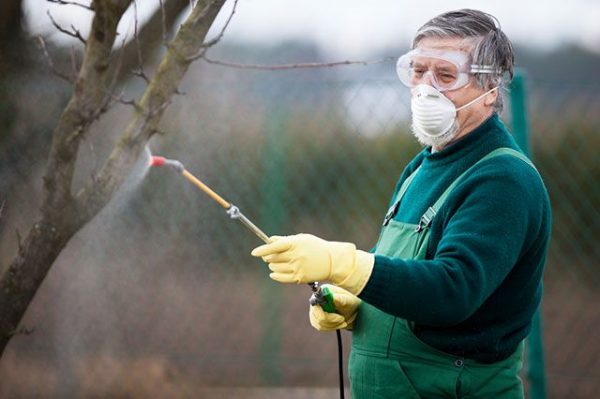

This procedure can be done in different ways:
- Infusion of ash and soap.
About 3 kg of ash is mixed with 50 g of soap in a bucket of water. The treatment is done with a warm solution.
- Inkstone.
About 500 g of a solution with a concentration of 3-5% are dissolved in a bucket of water.

